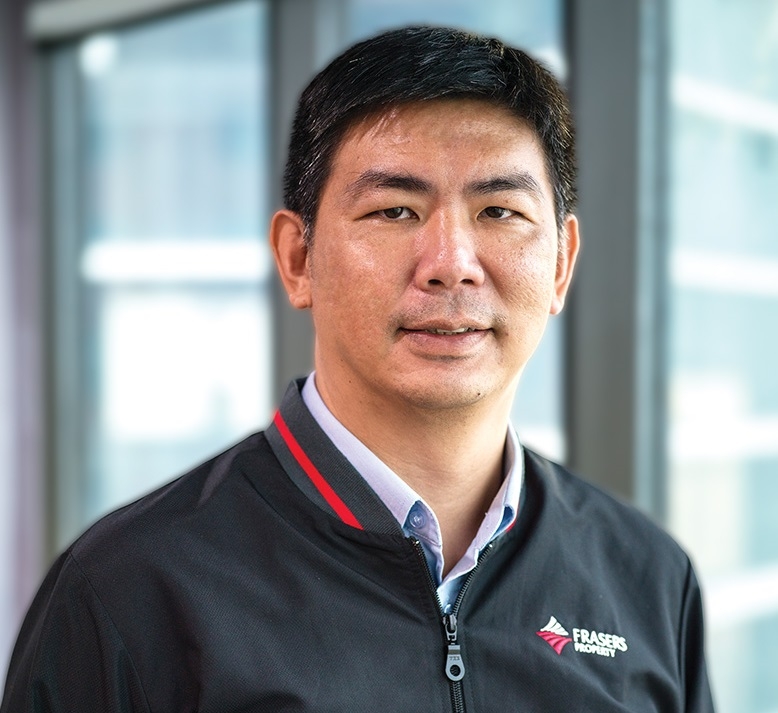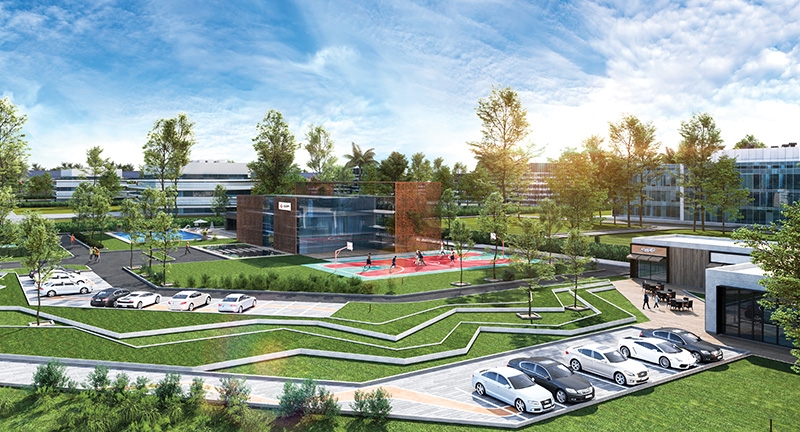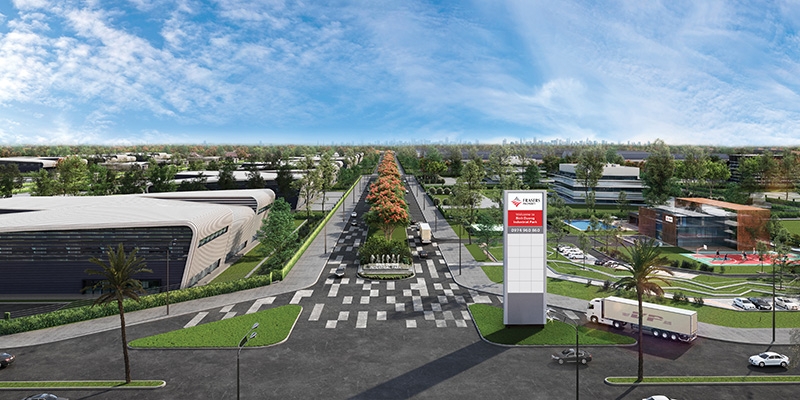Frasers Property diversifies its portfolio across Vietnam
As one of the most active real estate developers in Singapore and abroad, what are the main goals of Frasers Property?
 |
| Chong Chee Keong, general manager of Industrial Property at Frasers Property Vietnam |
We are a multinational real estate company and are listed on the Singapore Exchange. Our business today takes us across Southeast Asia, Australia, Europe, and China. We are also active across several real estate sectors such as industrial and logistics, commercial offices, business parks, retail, residential, and hospitality.
In Vietnam, we focus on the three high-performance segments: residential, commercial, and industrial. We follow the group’s purpose of inspiring experiences and creating places for good – a firm commitment to make the quality of every experience better for all our customers.
By acting progressively, producing and consuming responsibly, and focusing on people, we aspire to build a more resilient business. Leveraging our knowledge and capabilities across markets and property sectors, we aim to create and realise lasting shared values to benefit everyone.
What is your strategic priority and how does that guide the company’s focus?
Against the backdrop of challenging global economic and geopolitical conditions, we recognise change and uncertainty will be a constant. We want to thrive and can only do so by successfully evolving and reinventing ourselves through the group’s organisational agility and tenacity. In addition we will also be focusing on people, investments and returns, and our customers-centric activities.
Continue building our foundation in the post-pandemic world is a key priority to enable us to evolve and reinvent Frasers Property. Throughout this pandemic, we have seen the importance of resilient business platforms with the right focus, relevant scale, and strong local expertise which fortifies us to deliver long-term value.
Sustainable development is the foremost target in Frasers Property’s investment strategy. Could you briefly describe how sustainable development has been implemented so far?
We continue to face significant environmental challenges brought upon by climate change, and social issues are becoming more pronounced. Delivering a sustainable impact – for our planet, people, and communities – has never been more important. It has become increasingly clear that Frasers Property must not only deliver financial performance but also needs to understand its role in society and how to make a positive contribution.
We are targeting carbon neutrality across all our properties by 2050. This is one of our five sustainability goals driving our group-wide businesses. Multinational real estate firms such as Frasers Property are in a privileged position to play a major role in reducing the carbon footprint.
All our business units will join this journey by creating their net-zero carbon roadmaps. With over 200 buildings green-certified since 2005, we are targeting to green-certify 80 per cent of our owned and managed assets to ensure greater energy efficiencies by 2024, and we are making good progress.
As one of the highlights of our green journey, I can mention the Melinh Point – a Grade A office building – which achieved the prestigious Green Mark Platinum Certification by Singapore’s Building and Construction Authority. Likewise, another office development, Worc@Q2 is on track to achieve its certification.
Meanwhile, Binh Duong Industrial Park (BDIP), our first industrial segment in Vietnam has also joined the green journey, and we have started carrying out sustainability goals there.
 |
| Frasers Property initiatives are built upon a strong sustainability approach, Artist’s impression |
How is sustainable development implemented at BDIP?
BDIP is the first industrial development of Frasers Property in Vietnam. Located in the southern economic hub of Binh Duong province, BDIP is set to be the ideal industrial and logistic hub for foreign direct investment and leading national enterprises.
BDIP creates a concept of being modern, dynamic, and sustainable that allows for the merging of related, inter-dependent industrial activities with business operations.
We have mapped out a sustainability roadmap for BDIP’s development by incorporating environmentally- and socially-friendly practices throughout the entire value chain – from investment over design and development to operations. There will be a strong focus on carbon reduction, energy efficiency, renewable energy, and innovative solutions.
Besides leveraging innovative, low-carbon solutions and materials, we are also moving towards renewable energy sources and offsetting the balance with carbon credits. Our products and facilities will incorporate low-power-density lighting, high-efficiency water fixtures, sustainable materials, natural ventilation, and greenery.
To achieve this sustainable goal, strong collaborative efforts and the support of every party in the ecosystem are required. With contractors, suppliers, and vendors, we are working to better understand their sustainability practices and work with them to bridge possible gaps and minimise environmental impact.
For our customers, we engage our tenants on a regular basis to spread awareness on climate issues and empower them to take action through green leases with us.
 |
How is the progress of this project so far?
Since our announcement of the project in May, the team carried out a lot of work to enhance and upgrade the industrial park conditions. By the end of 2021, the upgrading of the wastewater treatment plant will be ready to serve the upcoming tenant. We will also be upgrading the infrastructure quality and efficiency of the park, including landscaping and traffic control.
BDIP focuses on customers in logistics and distribution, light and supporting industries, high-tech, and other non-polluting industries. We will develop 80,000 square metres of RBF/RBW facilities which will be fully certified for their green standards in line with our group’s sustainability policy.
The completion of the park is expected in the second quarter of 2022, and we will be able to provide quick-start solutions for both enterprises’ production and warehouse demand.
What the stars mean:
★ Poor ★ ★ Promising ★★★ Good ★★★★ Very good ★★★★★ Exceptional
Related Contents
Latest News
More News
- Sun Group breaks ground on $2 billion Van Don casino complex (December 19, 2025 | 18:14)
- Rare, beautiful, sustainable: the mark of iconic real estate (December 19, 2025 | 08:00)
- Owner-occupied housing stabilises, paving the way for new growth cycle (December 18, 2025 | 17:04)
- Unlocking urban potential of smart cities (December 18, 2025 | 16:50)
- Green finance offers 'passport' for Vietnamese construction, building materials firms (December 15, 2025 | 08:00)
- Gamuda Land commit long-term investment (December 12, 2025 | 11:49)
- HITC ties up with Evolution to develop AI and hyperscale data centres in Vietnam (December 11, 2025 | 12:09)
- Real estate deals boom via high-profile names (December 08, 2025 | 11:32)
- Industrial segment shaped by M&As (December 08, 2025 | 08:00)
- The Privé sets the benchmark for luxury real estate (December 05, 2025 | 08:28)

 Tag:
Tag:





















 Mobile Version
Mobile Version